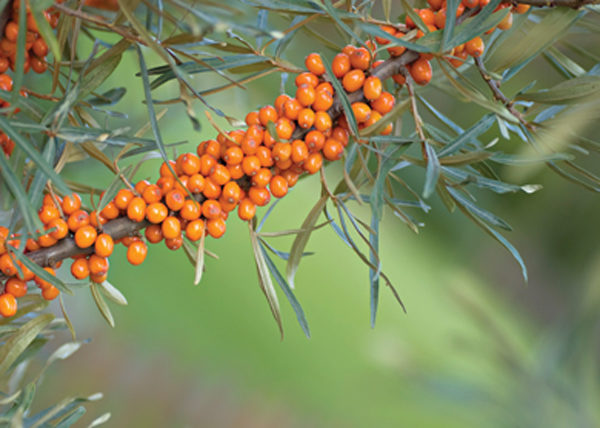There are fruits, and then there are superfruits. More than just a lot of marketing hype, the title of superfruit most often designates a richly nutritious, often exotic and delicious food, one with studied health benefits. As a category, it is a relative newcomer to the dietary supplement stage, and as such it is still developing. The superfruits whose names many are already familiar with, like noni, açaí, blueberry, grape, mangosteen and others, will contend in the market with lesser known imports like cupuaçu and caja.
“The term ‘superfruit’ no doubt means different things to consumers and industry insiders alike, but at its core there is usually a long history of traditional use that is strongly associated with health benefits, coupled with recent scientific research that details potential pathways of efficacy,” says Hartley Pond, vice president of technical sales, VDF/FutureCeuticals, Momence, IL. Regulatory issues affecting the category, as well as the real health and marketing impact of antioxidant values and of the various delivery methods from liquid to powder, are all subjects ripe for discussion. Read on to learn how these fruits have earned their super name.
Heroes of Nutrition
General characterizations of the superfruit category vary. “A superfruit, to do justice to the name, should be a fruit that does more good to human health than an ordinary fruit,” says Xingwu Liu, president of SeabuckWonders, Chicago, IL. Thinking primarily of the marketing aspect, Dean Mosca, president of Proprietary Nutritionals Inc., Kearny, NJ, says, “The fun thing about the term ‘superfruits’ is that it is a memorable moniker; it’s catchy and attention-getting.” 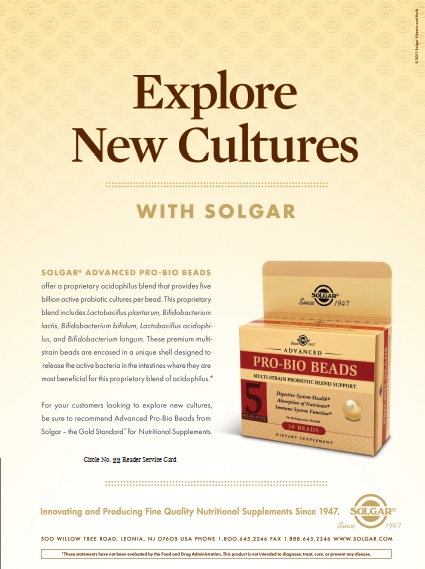
Once we get past established players that have already gained a measure of consumer acceptance, predicting the next superfruit to cause a stir can be a bit of a guessing game, as experts will attest. “There are a variety of other superfoods that are up and coming. Whether they are going to make a splash given the economy, and the clutter on store shelves, remains to be seen,” says Steve Kravitz, president of Earth’s Bounty, Vancouver, WA.
Kravitz says that one of the earliest introductions responsible for launching the superfruit category was noni. When it hit the United States market over a decade ago, this tropical fruit also known as Indian mulberry was touted in part for its antioxidant content, but as we will see, structure/function benefits earn a superfruit its stripes.
You can count açaí among the superfruits that are here to stay, according to Chris Cuvelier, CEO and founder of Zola, San Francisco, CA. “Açaí has worked hard for over 10 years to receive the notoriety it has and consumers are finally aware of its exceptional health benefits, antioxidants and omegas,” he says. A recent study in the journal Nutrition, which confirmed the antioxidant benefits of açaí in the form of reduced oxidative stress biomarkers, lends support to the notion that açaí may help those with high cholesterol. The researchers concluded that in an animal model, supplementation with açaí pulp had a cholesterol-lowering effect (1).
Blueberries are, of course, exceedingly familiar to U.S. consumers, and they are also often classified as superfruits for the high-end nutrition they provide. “In fact,” says Thomas J. Payne, industry specialist for the U.S. Highbush Blueberry Council, Folsom, CA, “blueberries are often the default and everything on superfruit lists is compared to 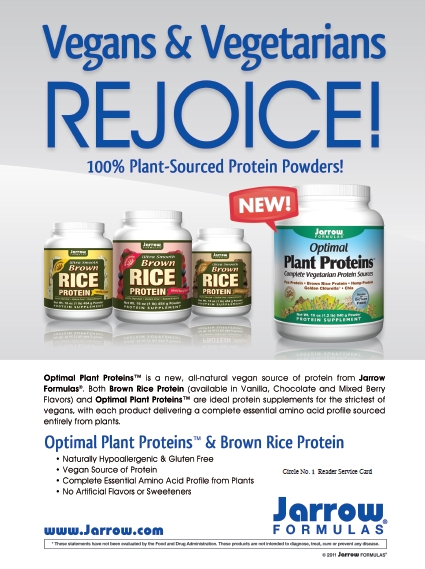 them.” Blueberries fit the bill of superfruits perfectly, according to Payne, since they contain large amounts of flavonoids such as anthocyanins, which give blueberries their deep pigmentation, as well as provide antioxidant and anti-inflammatory benefits.
them.” Blueberries fit the bill of superfruits perfectly, according to Payne, since they contain large amounts of flavonoids such as anthocyanins, which give blueberries their deep pigmentation, as well as provide antioxidant and anti-inflammatory benefits.
Blueberry consumption in the United States began to increase, Payne says, when they were included in publications like Steven Pratt, Ph.D.’s book, Fourteen Foods That Will Change Your Life—Superfoods RX. Pratt identified blueberries as one of the major “superfoods” with numerous nutritious effects, even dubbing them “brainberries” for their studied ability to protect the brain from oxidative stress and other age-related conditions.
Payne says that blueberries are finding their way into popular drink formulations, geared toward providing fiber and antioxidant support in combination. For all blueberry-infused products, the highbush blueberry industry has developed The Real Blueberry Seal, which helps buyers identify the presence of real, whole blueberries. To wear the seal, products must contain real highbush blueberries in any form, in an amount that is at least the standard for a given product category. Payne says this usually means the blueberries can be easily seen and tasted in the finished product, adding, “We’d like to see blueberries on the top of the ingredient list.”
Dallas Clouatre, Ph.D., new product development and marketing consultant for Jarrow Formulas, Los Angeles, CA, believes that fruits such as blueberry, pomegranate, bilberry, goji, cranberry and grape will enjoy enduring popularity, as they have defined niches and histories of use, as well as continually growing scientific support.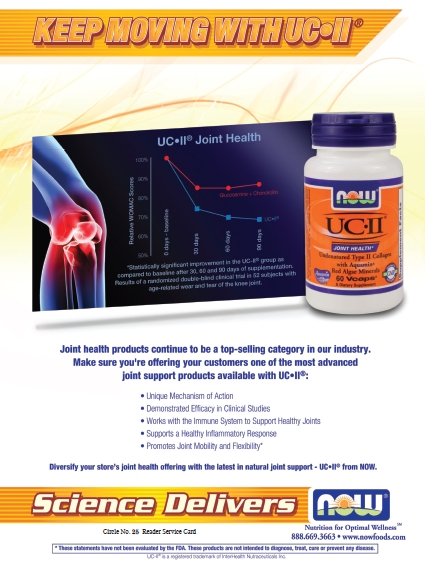
Some superfruits are enjoying success in other countries and may soon become popular on the U.S. market. One is blackcurrant, which he says is widely consumed in Europe and has an equivalent nutritional profile to recognized superfruits like cranberry and bilberry. Given this background, Clouatre says, “its slow launch into this market is a bit of a mystery.” Kravitz says that New Zealand blackcurrant, in particular, is a superfruit keeper, mostly because of the positive research associated with this specific variety.
Clouatre also cites sea buckthorn berries as another example of a superfruit, commonly consumed abroad, that has yet to hit it big here. In China, explains Liu, there is a very established role for sea buckthorn berries. The fruit and its components “have already been officially recognized as both foods and medicine in the People’s Republic of China, which boasts more than 90% of sea buckthorn production,” he says.
This orange-colored fruit’s nutritional profile reveals more than 200 components. According to Liu, the array includes all known vitamins, 18 amino acids and fatty acids like omegas-3, -6, -7 and -9. It is also rich in other phytonutrients and minerals too numerous to list.
Apart from the benefits of these individual nutrients, Liu emphasizes the synergistic effects that they all might have together. Like almost all superfruits, sea buckthorn has an especially potent antioxidant content, says Liu. Citing its use in areas such as cardiovascular, gastrointestinal, respiratory, urinary, gynecological, immunological and dermatological health, Liu concludes, “Though still negligible at present, sea buckthorn will certainly expand its current market share in the near future.”
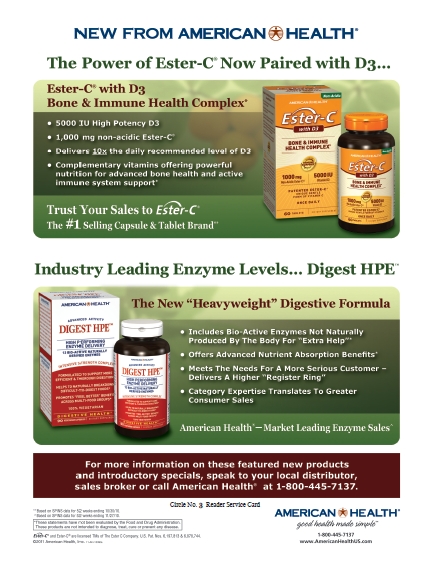 Plaudits for the superfruit mangosteen in recent months are impressive: The Dr. Oz Show, the National Restaurant Association, Entertainment Weekly and other outlets have praised the mangosteen, which is believed to have originated in Indonesia. Brands like Estee Lauder and Gatorade have added mangosteen to newly created products. Serving to illustrate mangosteen’s antimicrobial properties, a recent study found an extract of mangosteen inhibited the growth of mutans streptococci, the bacteria group primarily responsible for dental caries (2).
Plaudits for the superfruit mangosteen in recent months are impressive: The Dr. Oz Show, the National Restaurant Association, Entertainment Weekly and other outlets have praised the mangosteen, which is believed to have originated in Indonesia. Brands like Estee Lauder and Gatorade have added mangosteen to newly created products. Serving to illustrate mangosteen’s antimicrobial properties, a recent study found an extract of mangosteen inhibited the growth of mutans streptococci, the bacteria group primarily responsible for dental caries (2).
Superfruits like mangosteen don’t just have more of what we need, they also have what we can’t typically get elsewhere. “They contain phytonutrients that are not found in ordinary fruits—and in the case of mangosteen, in more abundance and a more stable and soluble form,” says Jeff Chandler, senior manager of corporate communications for XanGo, LLC, American Fork, UT.
Making their way up from South America are a group of unheralded superfruits with interesting nutritive offerings. “A few Brazilian superfruits you can expect to see emerging into the market over the next few years are cupuaçu, acerola and caja,” says Cuvelier. He broke down their attributes for WholeFoods as follows:
• Cupuaçu is a melon-sized fruit with a hard outer shell, a creamy, white pulp and a taste likened to a combination of passion fruit, banana and chocolate flavors. It contains the antioxidant theobromine as well as nine others, and also houses essential fatty and amino acids and vitamins A, B1, B2, B3 and C.
• Acerola looks much like a cherry and, according to studies, it contains 32 times the amount of vitamin C found in oranges.
• Resembling a small mango and boasting a citrusy taste, caja’s key nutrients include beta carotene, vitamin C, calcium and iron.
Other under-recognized superfruits include maqui, coffeeberry, aronia and black raspberry, all of which according to Pond have interesting phytonutrient profiles, and have yet to be brought into the spotlight. A superfruit that is especially associated with the Southeast Asia region and Vietnam, called gac, is rich in carotenoids and is becoming more common as a supplement ingredient.
A whole sub-section of the superfruit scene is getting attention for something as seemingly superficial as fruit color. “Black produce is a major trend we’re noticing,” says Matt Phillips, president and CEO of Cyvex Nutrition, Irvine, CA, continuing, “The dark pigment has a high content of anthocyanins, which several studies have shown to possess significant health benefits, including heart health and vision improvement.” His company supplies two “black produce” ingredients to manufacturers, one of which is derived from a European variety of blackcurrant, and the other a black rice extract.
Grape extracts will be an enduring presence on the superfruit market, Phillips believes. This is due in part to the acceptance of The French Paradox, or the theory that the low incidence of heart disease in France is a result of the ingestion of red wine and grapes in high volumes.
Though among the glut of superfruits on the market, many trends come and go, James Gibbons, president of Nature’s Plus, Melville, NY, says this need not be the case. He puts forth the example of pomegranate, arguably the oldest superfruit. Originally found only in Persia, the pomegranate became a common sight elsewhere as global trade developed around 700 B.C. “Any Europeans of that era who considered pomegranates to be a passing fad would be shocked to learn that it has endured all these centuries and continues to be one of the most popular superfruits in the world,” Gibbons says.
ORAC the Oracle: Antioxidants and Marketing
The Oxygen Radical Absorbance Capacity (ORAC) value is found virtually everywhere in superfruit marketing. It is displayed prominently on product packaging, and is often a key feature of advertising campaigns highlighting a product’s health benefits. It seems prudent, then, for a discussion to take place about the worth, relevancy and future of the metric, and about the thinking that goes into product formulation in the superfruit category.
|
Why So Super? Having established that superfruits possess nutritional powers that other fruits are lacking, the question naturally arises: How did they get that way? The answer, predictably enough, is evolution. “Basically, a superfruit is a nutrient-dense fruit or berry that builds up its own antioxidants to withstand climatic and environmental assaults in order to survive its life in its natural habitat,” explains Dean Mosca, president of Proprietary Nutritionals Inc., Kearny, NJ. The result of this process is to the benefit of superfruit consumers everywhere. Neil E. Levin, CCN, DANLA, nutrition education manager for NOW Foods, Bloomingdale, IL, goes in depth as to how this survival of the fittest occurs over time. “It has been shown in studies that plants make antioxidants in response to environmental challenges,” says Levin, going on to list such factors as droughts, variations in nutrient availability, competition with weeds, attacks by molds or bugs, lack of or excess sunlight, and other conditions that have been made less common by modern industrial agriculture. A normal piece of fruit, according to Levin, may have hundreds of Oxygen Radical Absorbance Capacity (ORAC) units, typically a laboratory measure of antioxidant activity in a test tube. A superfruit, by comparison, may possess dozens of times more antioxidant activity. As non-conventional crops, they tend to be more nutritious, especially with their high content of antioxidant groups like polyphenols. Some superfruits are native to rainforests, while others evolved in more arid regions. Levin alludes to studies showing that biodiversity protects and challenges plant species to produce these protective phytochemicals that serve as crucial human nutrients. This is another reason why wildcrafted fruit tend to have more varied and potent nutritional profiles than orchard-grown fruit. Another factor that has nothing to do with nutrition, but which some consumers find interesting, is that the success of superfruits can play a role in preserving the world’s rainforests. According to Levin, if indigenous people are having financial success from harvesting wild fruit, they are more likely to protect local rainforest acreage from logging and development. Jeff Chandler, senior manager of corporate communications for XanGo, LLC, American Fork, UT, echoes the notion that superfruits are unique in their development. For the many varieties that grow in tropical regions, intense heat and humidity lead to strong pigmentation, which is an indicator of their healthful potential. The natural chemicals required for the fruits to adapt are what sets them apart. “This causes these fruits to have properties not found in common fruits, such as an apple,” Chandler says. |
Some believe the meaning of the ORAC value is diluted by marketing. Kravitz believes that if the industry is going to focus solely on ORAC numbers, then consumers would do well to stick with only the most affordable options for their antioxidant intake. Structure and function health claims must be in place, he emphasizes, in order to make products worthwhile to consumers and to justify dietary supplement price points.
Kravitz thinks that, to begin with, many consumers are confused about what an antioxidant actually does. “Antioxidant, scientifically, is a misnomer. It’s a free radical quencher. Free radicals cause damage associated with aging, and with the breakdown of DNA and RNA, which is associated with cancer,” he says.
Even from his perspective as a manufacturer, Kravitz thinks there are too many superfruit SKUs out there, saying, “It’s like a wine store at this point, with 80 different white wines…what’s the difference?” The industry, especially in this economy, needs to educate consumers about why it’s important to get to a health food store and buy superfruit products, Kravitz believes. Talk about ORAC numbers cannot continue, he says, if consumers don’t understand their value.
In a nutshell, ORAC describes the potential for antioxidants to engulf free radicals, Mosca says, but this is only one part of the equation. People should be encouraged to consume antioxidants continually for sustained benefit. Because antioxidants don’t reside in the body long after performing their beneficial tasks, continual intake is just as important as the level of antioxidant activity, as defined by ORAC.
Another issue with ORAC, according to Pond, is that as an ex vivo assay, it does not necessarily give good insight into a product’s bioavailability in the human body. “It is critical that ORAC data are accompanied by research that shows in vivo efficacy, such as down regulation of inflammatory markers such as CRP, ACE and NfkB that are known to be associated with the advance of health concerns,” he says.
Pond notes the recent development by Brunswick Labs of more advanced ORAC testing for food and nutritional products. Called Total ORACFN, this new assay tests for five free radical types: the hydroxyl, peroxyl, peroxynitrite, singlet oxygen and superoxide anion. Former tests were only measuring for hydroxyl free radicals, according to Pond. This is a step in the right direction, because there are many free radicals species that can impact human health, and researchers had realized the one-dimensionality of many ORAC tests.
Despite the advances in testing, singling out the actions of fast- and slow-acting antioxidants and allowing other insights into the status of free radicals, Clouatre says that the role of antioxidants in the body is still not all that clear. Hundreds of nutrients now have the antioxidant label associated with them, but Clouatre argues this leads to a sort of marketing paradox, saying, “To paraphrase a famous observation, if every supplement is an antioxidant, then being an antioxidant no longer is anything special.”
ORAC claims today do not carry the same weight in marketing as they did a decade ago, Clouatre says, and while antioxidant claims may still be useful, individual nutrients now need to have specific benefits associated with them. He gives the example of blackcurrant, which in addition to a high ORAC score, also provides protection for the brain and the eyes. This is due to the particular anthocyanins, including delphinidin-3-rutinoside and cyanidin-3-glucoside, that blackcurrant contains.
|
Playing Hard to Get Regarding these exotic source locations, quality control can represent difficulties as well. “Fruits from exotic locales may be hard to police for continuity in color, taste, nutrient content, and so forth,” says Dallas Clouatre, Ph.D., new product development and marketing consultant for Jarrow Formulas, Los Angeles, CA. So, it makes sense to expect some variability among manufacturers, and even within brands, in terms of product quality, an aspect of this market of which retailers should be aware. Superfruits as a market may also be particularly affected by any disruptions in global trade, especially when it comes to more volatile regions of the world that also happen to grow certain superfruits. Some manufacturers pay top dollar to guarantee harvesting practices that are environmentally friendly, and that feature fair trade wages for the harvesters. The benefit is that growers like these are usually organized, and work agricultural adversity into their prices to prevent fluctuations. “By opting for superior producers, we not only get higher quality ingredients, but also the benefit of greater stability in our supply chain,” says James Gibbons, president of Nature's Plus, Melville, NY. Instability can occur when supply fails to materialize. Hartley Pond, vice president of technical sales, VDF/FutureCeuticals, Momence, IL, explains that a crop failure in Chilean raspberries will profoundly affect raspberry prices in the United States. To further complicate things, some superfruits are available year-round from their source regions, while some are seasonal. There are crops such as maqui berry that only grow in specific regions such as Patagonia, which according to Pond is limited by a short growing season, and demand has the potential to outrace supply. Yet, of course, U.S. consumers expect to be provided with their favorite superfruit products without interruption, so manufacturers must factor this in. However, “I don’t see our demand cannibalizing the supply at all,” says Steve Kravitz, president of Earth’s Bounty, Vancouver, WA. He thinks the local economies that support many superfruit harvests are only too happy to expand and meet Western consumer demand. |
As far as the future of ORAC testing goes, Clouatre thinks that values should be standardized. For instance, it can be misleading to compare wet samples of a fruit with dried samples of others, a common practice in the industry, according to him. In addition, nutrients are water soluble, while others are fat soluble, so ORAC values may be misleading as to how bioavailable they are.
Using advanced testing of the kind discussed above, Larry Logsdon, founder of Tahiti Trader, Riverside, CA, says his company measures ORAC values in its finished products, not before manufacture. Logsdon points out that the U.S. Department of Agriculture’s Dietary Guidelines suggest through their recommended fruit and vegetable intakes that we get 2,500 ORAC units per day, minimum. This is a good number with which to compare ORAC values in dietary supplements.
Some are proponents of ORAC as a straightforward indicator to consumers of potential health benefits. “As I visit with my patients, I describe ORAC as the ‘anti-rust’ factor. Education on the oxidative burdens to the body and the quenching factors of antioxidants point to the capacity to confer protection against damage to the 75 trillion cells of the body,” says Chris Meletis, N.D., director of science and research for Trace Minerals Research, Roy, UT.
Several experts expressed the feeling that ORAC measurements are useful, perhaps in part because they’re the best metric we have. Emphasizing that it is only a measure of test tube activity, Neil E. Levin, CCN, DANLA, nutrition education manager for NOW Foods, Bloomingdale, IL, says that ORAC numbers may not accurately reflect antioxidant action in the body. He says people realize this, but until something better comes along or science learns more about what existing ORAC tests can tell us, it will remain a useful yardstick for nutritional content.
One important point that shouldn’t be passed over is that consumers should avoid getting bogged down in the high ORAC value of a particular superfruit or product. “While ORAC is important, it is equally important to consume a variety of fruits and vegetables because each one may have something unique to offer,” Phillips says.
One day, Gibbons explains, scientists may develop a set of optimal levels for the variety of antioxidants we need to stay healthy. “Until then, we will probably do best to make sure we get a variety of antioxidants from the widest possible range of sources,” he says.
Delivering the goods. The reason for the proliferation of liquid superfruit supplements is easy to see, the way Cuvelier puts it. “Liquid supplements are a quick and convenient way to deliver the health benefits consumers are looking for, that can be more fun and satisfying than pills and powders,” he says.
In formulating superfruit products, though, nature often dictates delivery method. Chandler says the goal for his company is to deliver superfruits in the most natural form possible. This means mangosteen juice derived from whole fruit puree and mixed with other natural fruit juices.
Beyond nature’s intentions, another simple guide to the best finished product is the form in which the superfruit has been scientifically studied, according to Meletis. The form with proven health benefits, where the full array of nutrients and the ORAC value are preserved, is generally preferable.
Pond points out the number of variables involved in comparing one delivery method to another. It is hard to categorically declare one superior over the other, he says. Comparing a blueberry juice to a freeze-dried blueberry powder, even when the exact quantity of an active component is known in each case, can be difficult because of unknown quantities like bioavailability.
When everything else is equal, there are factors that manufacturers weigh when deciding which form superfruit products should take. “Using dry powders in a liquid product actually reduces concerns about molds, fermentation, off-flavors, etc., while allowing far higher potencies as represented by ORAC antioxidant values,” says Levin.
The intended customer goes a long way in determining a product’s form. “Often delivery is merely a matter of convenience and of who will be taking the product,” Clouatre says, adding that for instance, “We all know that children are unhappy customers for capsules and tablets.” In such cases, liquids are the way to go, and they are often marketed toward children for that reason.
Superfruits are finding their way into common beverages such as teas and juice blends, as an “added value” component, Logsdon says. In addition to supplements, Phillips sees them being included in everything else under the sun: functional foods, confections and nutritional bars, which consumers like for their convenience.
Superfruits on the Shelf
A regulatory issue that has cropped up for the superfruits market in the past few years is the FDA guidance on what constitutes a food or beverage vs. a supplement product. In the case of Levin’s company, those products marketed as fruit juices are considered foods. Superfruits in capsules are deemed dietary supplements and are clearly labeled as such, as are certain extracts and concentrates in liquid form.
“It’s important to note that the federal government refuses to recognize ‘structure-function’ claims made on foods, which do not have DSHEA protections,” Levin says, referring to the Dietary Supplement Health and Education Act of 1994. He explains how food companies touting the benefits of their superfood products have been targeted by federal agencies, so it is often preferable to place products in the dietary supplement mold, where these same claims are more allowable if properly documented.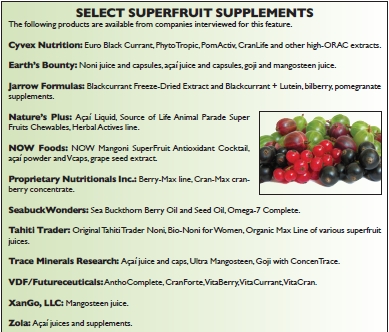
Gibbons says the supplement industry will always be skeptical of an FDA guidance that serves to restrict the way dietary supplements are presented on store shelves. “One wonders if coffee were invented today, would it be considered misbranded by the FDA?” he asks. While noting that the guidance hasn’t tended to affect his company’s products, he encourages all stakeholders to voice their opinions on the matter to the government.
Enforcement of these types of regulations has been inconsistent. There is the notable and recent case of POM Wonderful, where the FDA was challenged on labeling and marketing enforcement issues based on scientific documentation. Yet, Clouatre points out, the FDA seems to ignore the many companies that sell açaí on the Internet and make claims that have no substantiation.
Phillips has advice for those dealing with newer superfruits that may face regulatory scrutiny if marketed as a food product. “If a formulator selects an ingredient that is not FDA GRAS approved, the marketer should ensure the finished product is clearly promoted as a dietary supplement,” he says.
 As for the term “superfruit” itself, it remains unregulated and open to interpretation. “Because the term superfruit is not legally defined, there are no boundaries for how food companies can exploit the term on foods and beverages,” says Payne. For example, Payne explains, a pomegranate-flavored chewing gum may be labeled a superfruit product, but may not contain the benefits one might find in a pomegranate yogurt smoothie.
As for the term “superfruit” itself, it remains unregulated and open to interpretation. “Because the term superfruit is not legally defined, there are no boundaries for how food companies can exploit the term on foods and beverages,” says Payne. For example, Payne explains, a pomegranate-flavored chewing gum may be labeled a superfruit product, but may not contain the benefits one might find in a pomegranate yogurt smoothie.
Keeping them super. Maintaining nutritional integrity from source to shelf can be an issue when it comes to the oftentimes highly degradable content of certain superfruits. “Stability is a big concern we encounter, as phytonutrients can be very sensitive to heat, light and manufacturing processes,” Chandler says. Organic compounds called xanthones, found in the mangosteen fruit body, are very heat and light stable according to Chandler, making for a consistent final product and shelf life. Chandler’s company has established a xanthone measurement standard in recent years as a form of quality assurance.
Also, when sourcing from the far flung regions that superfruits tend to hail from, preserving their super qualities is an issue. “Once we have sourced a superfruit, the concern that we often times have is how to get the fruit back to our plant, where we can turn [them] into high-quality juices with minimal losses,” says Logsdon.
Super futures. How many superfruits can there really be left to discover? Meletis believes there are always new frontiers in this market, because we have yet to learn all we can from the globe’s indigenous peoples, and have yet to fully explore remote regions such as the Amazonian rainforest. “However, many of the superfruits that have been delivered to the marketplace get trumped by the latest ‘newsworthy discovery’” he says.
This glut of superfruits in the news, for better or for worse, may persist into the future. “We are confident that as time goes on, more superfruits will be discovered in the tropical and sub-tropical regions, as well as in the Middle East,” Mosca says. Payne paints the picture of intrepid explorers deep in the jungle, hoping to stumble luckily over some brightly-colored next-big-thing, like Ponce de Leon searching for the fountain of youth.
Because of all the hype and the proliferation of superfruit products on store shelves, companies see it as important to be first to market with new discoveries, meaning they are keeping their lips sealed on the details. Without revealing too much, Logsdon says, “There are more new superfruits on the horizon…stay tuned.” WF
References
1. M.O. de Souza, et al., “Diet Supplementation with Açaí (Euterpe Oleracea Mart.) Pulp Improves Biomarkers of Oxidative Stress and the Serum Lipid Profile in Rats,” Nutrition 26 (7–8), 804–810 (2010).
2. P.T. Nguyen, “Antimicrobial Actions a-Mangostin Against Oral Streptococci,” Can J Microbiol. 57 (3), 217–225 (2011).
Published in WholeFoods Magazine, April 2011

